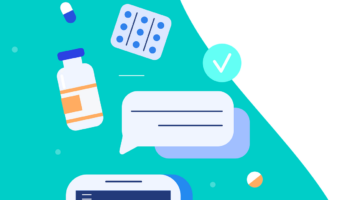A Twitter chat hosted by mHIMSS looked at the value of mobile health and where it could have the most impact on healthcare. Participants shared ideas on how mobile health, including apps, remote monitoring and telehealth could improve patient safety. It also highlighted some of the obstacles to greater adoption.
Here’s a look at some of the highlights:
Q1: How can mHealth enhance communication among providers and with patients to improve patient safety?
@mHIMMS #mHealth provides great opps for provider-provider comms. Noticing a lot of TigerText & Hipaachat installs lately. #mHIMSS
— Molly Oehmichen (@mollyoehmichen) September 18, 2013
One noticed theme during #NHITweek is leveraging mobile for patient edu on rights & care transparency/access. #mHIMSS — Michael A. Gaspar (@MichaelGaspar) September 18, 2013
@collinsdavid #mHIMSS would be great for test results and follow up instructions, e.g. high INR, high lipids, low glucose
— Maureen Shaffer (@maureenshaffer) September 18, 2013
What would be your number one suggestion to increase adoption of #mobile #apps?
A2: Increased adoption will eventually come with comfort of using mobile devices and education of populace – will be an expectation #mHIMSS — Mark Combs (@markdcombs) September 18, 2013
A2: @maureenshaffer @collinsdavid It takes a community to raise a child. It takes an ecosystem to rear an app. #mHIMSS
— Michael A. Gaspar (@MichaelGaspar) September 18, 2013
Q2: To increase adoption, increase integration with existing EHRs & other systems. Make data more valuable! #mHIMSS — Molly Oehmichen (@mollyoehmichen) September 18, 2013
A2: As a consumer, relevance is key. A focus on UI, UX, attention to end-user needs is a solid driver in my mind. #mHIMSS
— Michael A. Gaspar (@MichaelGaspar) September 18, 2013
@titanfileinc @collinsdavid @dlschermd Now, to get the ecosystem engaged & playing nicely. A lesson needed for EHR dev. SMH. #mHIMSS — Michael A. Gaspar (@MichaelGaspar) September 18, 2013
What is most effective use of #mHealth to help impact chronic care? Is it #remote monitoring? #Telehealth? #Apps?
@collinsdavid Depends on who and where–apps for kids with diabetes and global, telehealth for rural, monitoring for post discharge #mHIMSS
— Maureen Shaffer (@maureenshaffer) September 18, 2013
Q3: All of the above! #QuantifiedSelf movement will change healthcare. Patients will be aware of downstream effect of daily habits. #mHIMSS — Molly Oehmichen (@mollyoehmichen) September 18, 2013
App prescriptions unique to provider. Sounds like a differentiator! RT @titanfileinc What if apps backed through medical provider! #mhimss
— Michael A. Gaspar (@MichaelGaspar) September 18, 2013
@collinsdavid Entrepreneurs will lead but only by by joining forces w pts, providers, and insurers #mHIMSS — Maureen Shaffer (@maureenshaffer) September 18, 2013
What if insurance companies provided a lower rate for tracking health through apps? Just look at company wellness initiatives today #mHIMSS
— Mark Combs (@markdcombs) September 18, 2013
@markdcombs could be in the same vein as preventative care #mhimss — TitanFile Inc. (@titanfileinc) September 18, 2013
@maureenshaffer @collinsdavid Private sector has a lot of promise. How do we curb them from monetizing bare minimum? #mHIMSS
— Michael A. Gaspar (@MichaelGaspar) September 18, 2013
@MichaelGaspar As a doc said to me, “Money isn’t in the mission statement, but without money, there is no mission statement.” #mHIMSS — Molly Oehmichen (@mollyoehmichen) September 18, 2013










